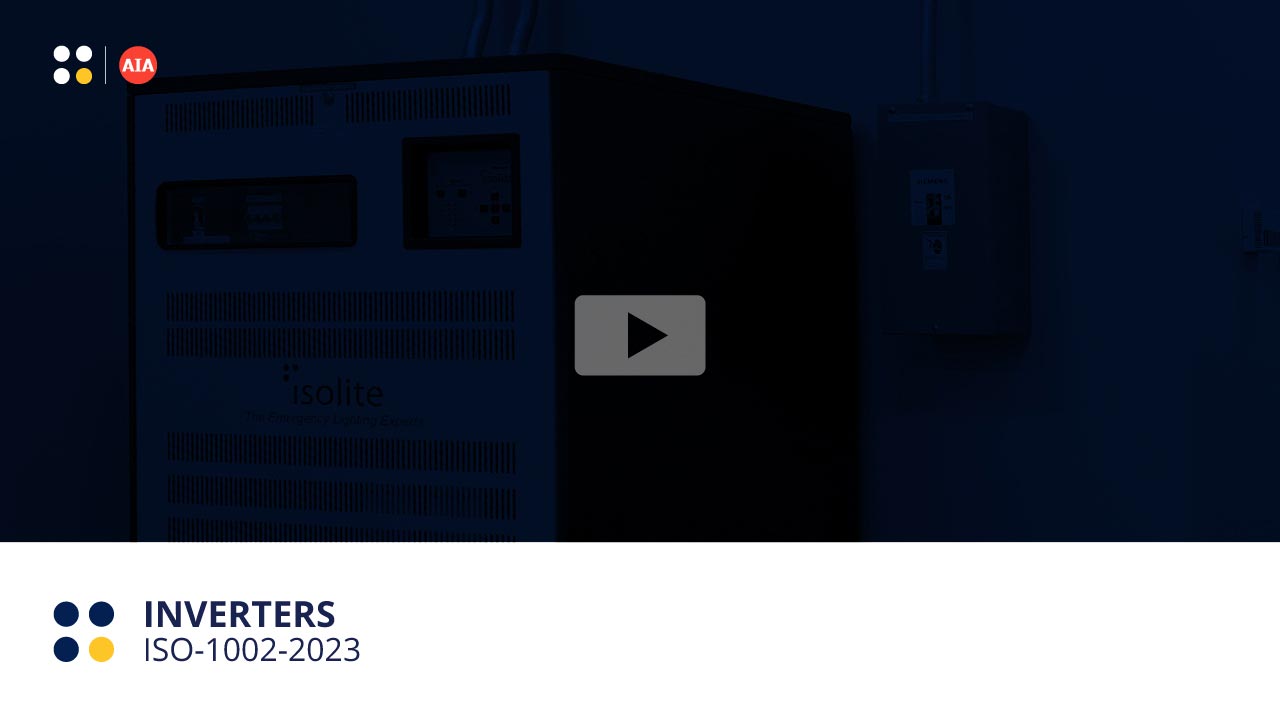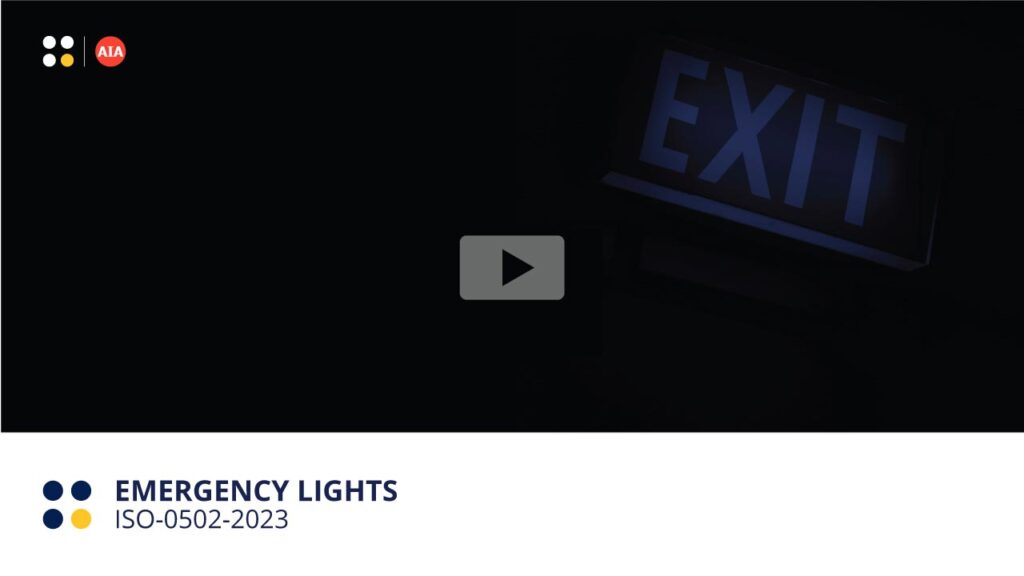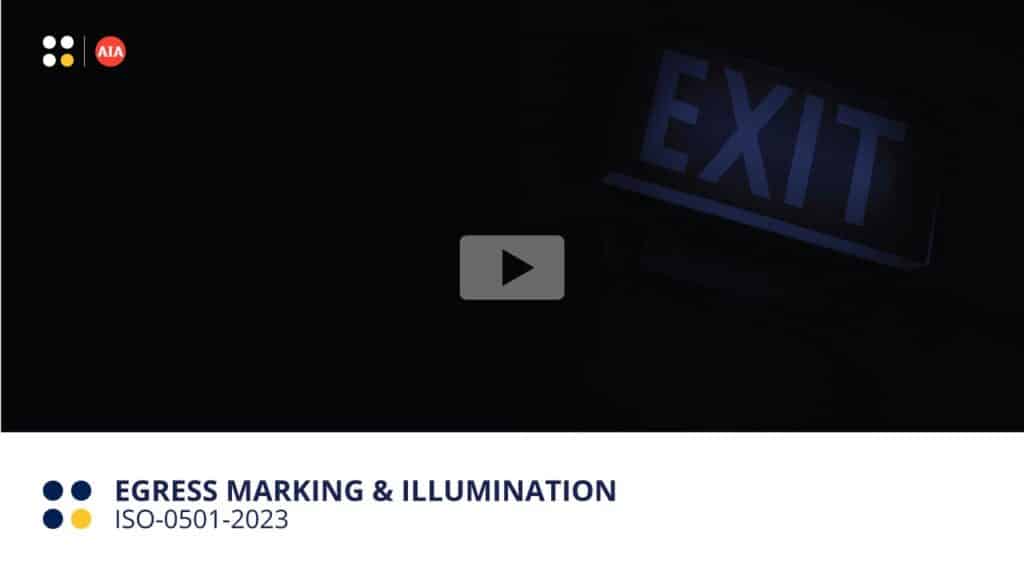These courses are designed to provide agents, architects, engineers, lighting designers, and anyone interested in developing a better understanding of available product solutions that meet mandated emergency lighting standards.

The more you know about emergency lighting, the better we look. That’s the motivation for the launch of our first series of AIA Accredited Courses.
Through these accredited AIA courses, the newest addition to our Continuing Education Program, monthly Chalk Talk webinars, and on-going agency training, it’s our goal to be your “go-to” resource for all your emergency lighting questions and solutions.
On-Demand AIA Accredited Courses
UL924 & UL1008 – What you need to know: ISO-1010-2023
Credits: 1 HSW, 1 LU
NFPA 70, the national electrical code details 2 different types of Emergency Lighting Control Devices — devices that guarantee that life safety lighting will be on at desired illumination levels in the event of an emergency. This course will help mitigate the confusion regarding the specification of these devices and understand their applications in the real world.
Inverters: ISO-1002-2023
Credits: 1 HSW, 1 LU
Inverters are a modern, simple way to achieve an emergency lighting solution while minimizing maintenance costs and utilizing existing architectural fixtures for emergency purposes. This course will give the student the skills they require to design and specify inverter-based emergency lighting systems.
Emergency Lights: ISO-0502-2023
Credits: 0.5 HSW – 0.5LU
This course is designed to introduce the architect to emergency lights. These lights are meant to be selected and installed according to specific standards established by building codes. Additionally, once installed, these systems must be tested to assure their efficacy in case of an emergency. How to select and specify the appropriate markers and the technological solutions available, as well as testing methods, will all be covered in this course.
Egress Marking and Illumination: ISO-0501-2023
Credits: 0.5 HSW – 0.5LU
This course is designed to introduce the architect to egress marking systems that are used for ordinary way finding and building evacuation in emergency situations. These signage systems are meant to be selected and installed according to specific standards established by building codes. Additionally, once installed, these systems must be tested to assure their efficacy in case of an emergency. How to select and specify the appropriate markers and the technological solutions available, as well as testing methods, will all be covered in this course.
Available Live AIA Accredited Courses

Egress Marking & Illumination
Egress Marking
Egress Illumination
These courses will give participants an overview of the technologies utilized in both exit signs and emergency lighting and how they’re used to meet the compliance requirements of the National Fire Protection Association’s Life Safety Code 101.
Additionally, these courses will provide insight in to the relative cost and complexity tradeoffs associated with the different product solutions and their impact on maintenance and system testing.

Inverters: What Are They, How Do They Work, How Do They Impact My Emergency Lighting System
Learn what an inverter is and how it fits within an emergency lighting plan as compared to other technologies (Traditional Emergency Lights, Battery Backup LED Drivers, Generators, UPS).
Learn how to specify an appropriate inverter, understand the nomenclature used (Normally On, Normally Off, Switched) and how the ratings of the inverter relate to how much load may be specified on it.
Learn how and when transfer devices are required to create a code compliant solution and the difference between UL 924 and UL 1008 style transfer devices.
Learn how inverters can reduce the maintenance load on the customers’ facility team.

UL924 & UL1008: What you need to know
NFPA 70, the national electrical code details 2 different types of Emergency Lighting Control Devices — devices that guarantee that life safety lighting will be on at desired illumination levels in the event of an emergency. This course will help mitigate the confusion regarding the specification of these devices and understand their applications in the real world.
Prerequisite Knowledge:
Knowledge of life safety systems, particularly a high level of understanding of the purpose of emergency lighting inverters and generators. In particular ISO-1001/ISO-1002 would be a perfect lead in to this course.
HSW Justification:
This deals with life safety the safe egress and illumination of buildings in the event of an emergency.
Learning Objective 1:
Understand the background technology where ALCR and BCELTS devices need to be deployed.
Learning Objective 2:
Learn the difference between the technologies and review how they sit within one-line diagrams.
Learning Objective 3:
Understand some of the real world tradeoffs between the device types as it relates to wiring, proximity and ease of testing.
Learning Objective 4:
Understand the integration of lighting controls with the different types of ELCDs and review some tricks for how to reduce costs in systems.

Emergency Lighting Cost Comparison
ISO-1020-2024 – One Hour Live Training
Covers the cost and complexities between several different emergency lighting solutions, including the the impact on building occupants when selecting the various options. Prerequisite Knowledge: None, but knowledge of emergency lighting terms is helpful.
Learning Objective 1:
Understand the different solutions for reaching code compliance in emergency lighting, including inverter systems, EM drivers, and unitary emergency lights.
Learning Objective 2:
Analyze a commercial building and understand what it will take to implement each solution. Further understand the tradeoffs for building occupant safety in the event of an emergency.
Learning Objective 3:
Determine the installation costs, including labor, for each different solution.
Learning Objective 4:
Understand the long term obligations for maintaining the different emergency lighting solutions.

Battery Technologies
ISO-1030-2025 – One Hour Live Training
All you need to know to become a battery expert. Understand exactly how they work and dive into the different chemistries and their respective pros/cons. Learn about batteries in Life Safety and beyond, and even get a glimpse into what the future of battery technology might look like.
Learning Objective 1: Understand the different types of batteries used in life safety, including lead-acid, nickel-cadmium, nickel-metal hydride, lithium manganese Cobalt, and lithium iron phosphate.
Learning Objective 2: Explore safety considerations for these batteries and discuss how they should be handled.
Learning Objective 3: Understand the long-term effects of the environment on these batteries and ensure their proper disposal as they reach end-of-life.





